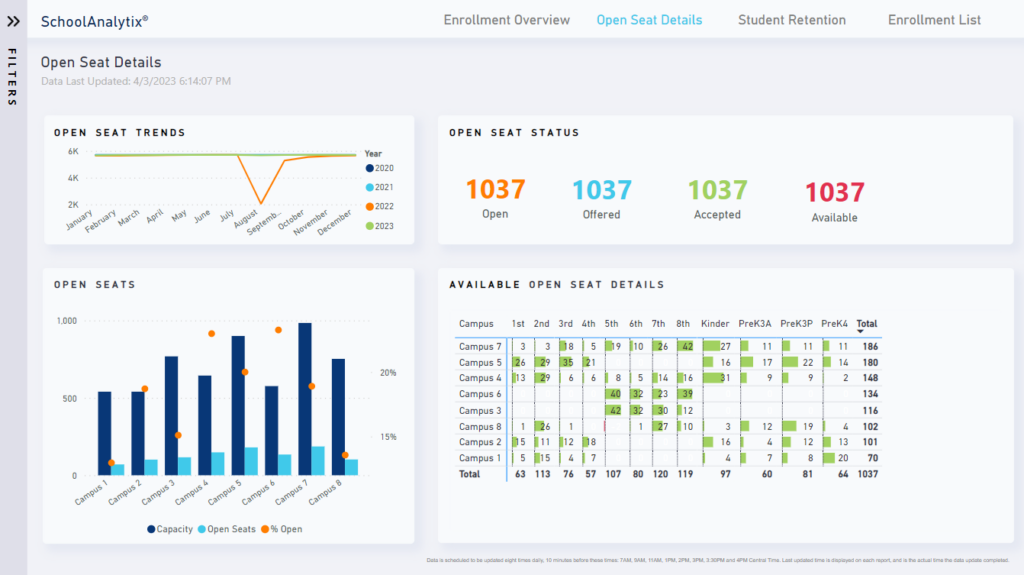In the ever-evolving landscape of education, one of the critical challenges that schools face is managing class capacities effectively. Balancing the demand for courses with available resources, physical space, and staffing is a delicate task that requires strategic planning and implementation. Open seat management, the process of monitoring and allocating available seats in courses, plays a crucial role in ensuring that students have access to the classes they need to pursue their educational goals. In this article, we will explore various strategies that schools can employ to optimize class capacities and enhance the overall learning experience for students.
Understanding Open Seat Management
Open seat management involves monitoring the availability of seats in courses and making adjustments to accommodate student demand while maintaining optimal class sizes. It requires schools to have systems in place to track enrollment numbers, anticipate demand for courses, and allocate resources efficiently. Effective open seat management ensures that students can enroll in the classes they need to fulfill graduation requirements, pursue their interests, and achieve academic success.
Challenges in Class Capacity Management
Managing class capacities poses several challenges for schools, including:
Limited Resources: Schools often have limited physical space, staffing, and resources to accommodate all student requests for courses.
Fluctuating Demand: Student demand for courses can vary from semester to semester, making it challenging to predict enrollment numbers accurately.
Scheduling Conflicts: Students may encounter scheduling conflicts when trying to enroll in courses, leading to frustration and delays in completing degree requirements.
Equity and Access: Ensuring equitable access to courses for all students, regardless of their academic background or socio-economic status, is essential but can be challenging to achieve.
Strategies for Optimizing Class Capacities
To address these challenges and optimize class capacities, schools can implement the following strategies:
Data-Driven Decision Making: Schools should utilize data analytics and enrollment trends to anticipate demand for courses accurately. By analyzing historical enrollment data, schools can identify patterns and adjust course offerings accordingly.
Flexible Scheduling Options: Offering flexible scheduling options, such as staggered start times, evening classes, or online courses, can help accommodate students with diverse needs and preferences. This flexibility allows students to balance their academic commitments with other responsibilities, such as work or family obligations.
Dynamic Course Offerings: Schools should regularly review and update their course offerings to reflect changing student interests and industry demands. By offering relevant and engaging courses, schools can attract students and maximize enrollment numbers.
Early Registration and Advising: Implementing early registration periods and providing academic advising services can help students plan their course schedules in advance. Early registration allows schools to gauge student interest in courses and make necessary adjustments to class capacities before the start of the semester.
Waitlist Management: Establishing clear waitlist procedures and regularly communicating with students about their waitlist status can help schools manage enrollment effectively. Schools should monitor waitlists closely and open additional sections of high-demand courses if necessary.
Cross-Listing Courses: Cross-listing courses allows schools to offer the same course under multiple department codes, increasing enrollment opportunities for students. By cross-listing courses, schools can maximize class capacities and ensure that students have access to the courses they need.
Collaboration with Departments and Faculty: Schools should foster collaboration between academic departments and faculty members to optimize class capacities. Departments can work together to share resources, coordinate course schedules, and identify opportunities for interdisciplinary collaboration.
Investment in Technology: Leveraging technology, such as course management systems and student information systems, can streamline the open seat management process. Automated waitlist management, online registration portals, and real-time enrollment updates empower students to manage their course schedules more efficiently.
Monitoring and Evaluation: Schools should continuously monitor enrollment trends, class capacities, and student feedback to identify areas for improvement. Regular evaluation of open seat management strategies allows schools to refine their processes and enhance the overall student experience.
Conclusion
Optimizing class capacities through effective open seat management is essential for ensuring that students have access to the courses they need to succeed academically. By implementing data-driven strategies, offering flexible scheduling options, and fostering collaboration between departments and faculty, schools can maximize enrollment numbers and enhance the learning experience for students. As the educational landscape continues to evolve, schools must remain proactive in addressing the challenges of class capacity management and adapting their strategies to meet the needs of a diverse student population.

